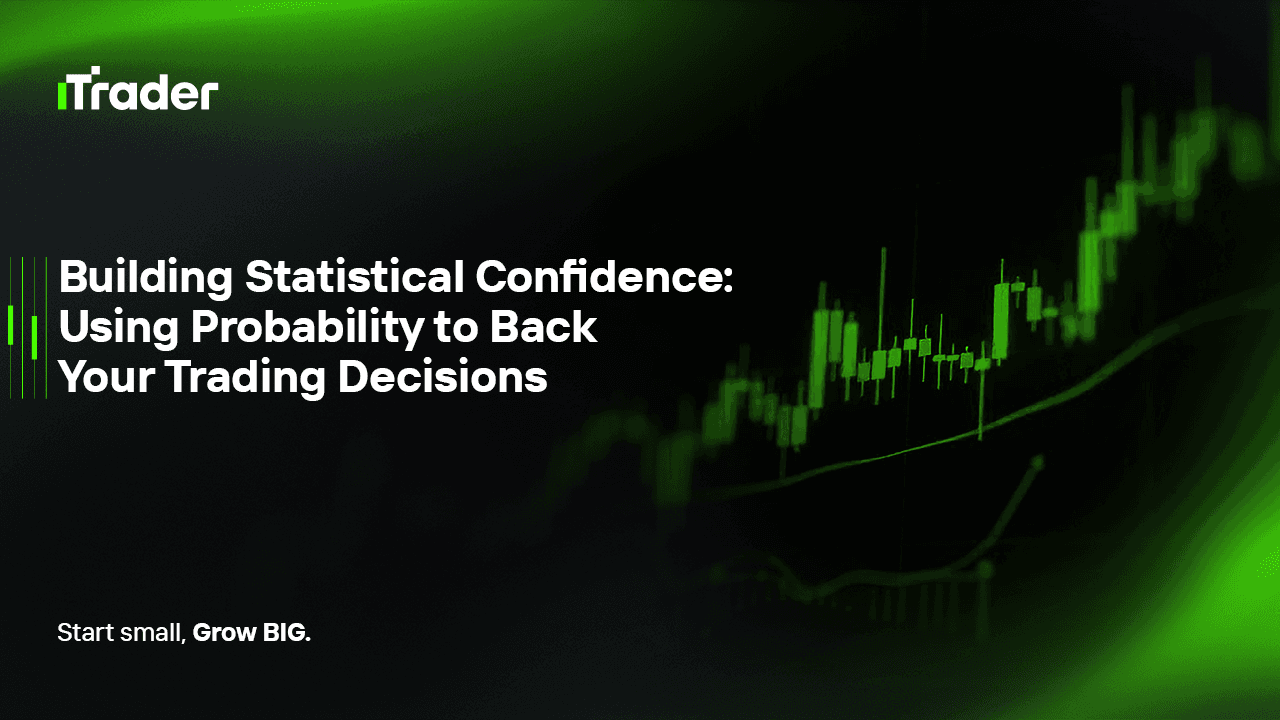2025-10-01
Making decisions in the Forex market often relies on intuition, experience, and market news. However, for consistent long-term success, traders must be able to make decisions with statistical confidence. Relying solely on emotions, temporary signals, or a few successful trades is not enough to pass prop firm evaluations or manage capital effectively.

Statistical methods allow traders to build confidence in their decisions using probability. Rather than trying to predict exactly what will happen in the market, traders can calculate the likelihood of certain outcomes and make systematic, informed decisions.
Probability measures how likely an event is to occur, ranging from impossible to certain. In Forex trading, probability is reflected in strategy win rate, the distribution of outcomes based on risk, and forecasts of strategy performance in various market conditions.
Statistical confidence indicates how reliably results from a sample can be generalized. A strategy may perform well over a period, but that alone does not guarantee future results. Using Confidence Intervals (CI) and hypothesis testing, traders can determine whether outcomes are due to skill or chance.
A Confidence Interval (CI) estimates the range in which the true value of a parameter, such as average strategy return, is likely to lie. It helps distinguish whether good results are systematic or coincidental.
The narrower the CI, the higher the statistical confidence. Narrow intervals indicate a larger sample size or consistent performance. In prop trading, this helps traders decide whether to use a strategy for evaluation, increase capital allocation, or adjust parameters.
Hypothesis testing evaluates whether an assumption is likely true based on probability. In Forex:
The p-value represents the probability of observing results if H₀ is true. A low p-value provides evidence that the strategy’s performance is not random, while a high p-value suggests it may be coincidental.
Each trade is uncertain, but patterns emerge over many trades. Traders can leverage these probabilistic tendencies to gain advantages in prop trading.
For example, if a strategy has a win rate of 55%, risk per trade of 1%, and a reward-to-risk ratio of 1.5:1, the expected return is positive. Applying this strategy over many trades increases statistical confidence, and the Confidence Interval narrows, allowing traders to use the strategy confidently in evaluations and live accounts.
To validate strategy performance, traders should:
Decisions should be made based on statistical confidence rather than intuition.
Prop firms focus on performance stability and risk discipline. By applying statistical methods, traders can:
Statistical validation provides a foundation for assessing a trader’s discipline, consistency, and long-term survivability.
Statistical confidence is not just about calculations; it is about moving from intuition to systematic, probability-based decision-making. Traders who use Confidence Intervals, p-values, and hypothesis testing consistently can maintain adaptability and consistent performance in prop trading and live accounts.
Practical recommendations:
Success in Forex depends not only on finding a winning strategy but also on validating it statistically and executing with confidence. Traders who master these concepts gain the ability to withstand psychological pressure, adapt to changing conditions, and maintain stable performance in prop trading and live accounts.
© 2025 iTrader Global Limited | Số đăng ký công ty: 15962
iTrader Global Limited có trụ sở tại Hamchako, Mutsamudu, Đảo tự trị Anjouan, Liên bang Comoros và được cấp phép, quản lý bởi Ủy ban Chứng khoán Comoros. Giấy phép số: L15962/ITGL.
iTrader Global Limited hoạt động dưới tên thương mại “iTrader” và được cấp quyền thực hiện các hoạt động giao dịch ngoại hối. Logo, thương hiệu và trang web của công ty là tài sản độc quyền của iTrader Global Limited.
Các công ty con khác của iTrader Global Limited bao gồm: iTrader Global Pty Ltd, số đăng ký công ty tại Úc (ACN): 686 857 198. Công ty này là đại diện được ủy quyền (số đại diện AFS: 001315037) của Opheleo Holdings Pty Ltd (giấy phép dịch vụ tài chính Úc AFSL: 000224485), có địa chỉ đăng ký tại: Tầng 1, số 256 đường Rundle, Adelaide, SA 5000.
Tuyên bố miễn trừ trách nhiệm: Công ty này không phải là tổ chức phát hành và không chịu trách nhiệm đối với các sản phẩm tài chính được giao dịch trên hoặc thông qua trang web này.
Cảnh báo rủi ro: Giao dịch CFD có mức độ rủi ro cao do đòn bẩy và có thể dẫn đến mất vốn nhanh chóng, không phù hợp với tất cả người dùng.
Giao dịch quỹ, CFD và các sản phẩm có đòn bẩy cao khác đòi hỏi kiến thức chuyên môn.
Nghiên cứu cho thấy 84,01% nhà giao dịch sử dụng đòn bẩy bị thua lỗ. Hãy đảm bảo rằng bạn hiểu rõ rủi ro và sẵn sàng chấp nhận mất toàn bộ số vốn trước khi giao dịch.
iTrader tuyên bố rằng họ sẽ không chịu trách nhiệm đầy đủ đối với bất kỳ rủi ro, tổn thất hoặc thiệt hại nào phát sinh từ hoạt động giao dịch có đòn bẩy, dù là đối với cá nhân hay pháp nhân.
Hạn chế sử dụng: iTrader không cung cấp trang web hoặc dịch vụ cho cư dân tại các quốc gia nơi hoạt động này bị cấm bởi pháp luật, quy định hoặc chính sách.